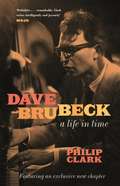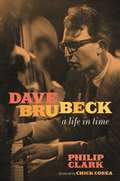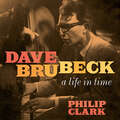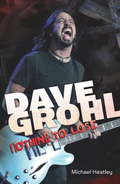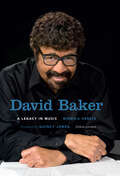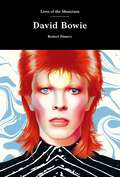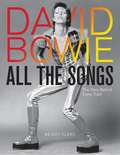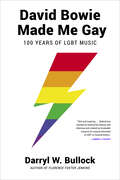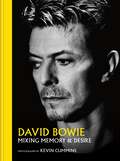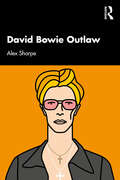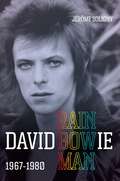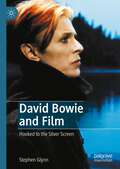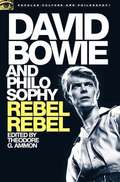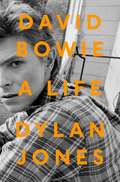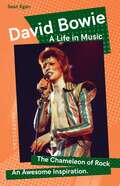- Table View
- List View
Das Populäre als Kunst?: Fragen der Form, Werturteile, Begriffe und Begründungen
by Thomas HeckenPopulären Werken wird seit Jahrhunderten der Status des Kunstwerks aberkannt, unter Verweis auf deren vermeintliche Oberflächlichkeit, Eindimensionalität, Effekthascherei und Standardisierung werden sie streng von ‚echter‘ Kunst geschieden. Schiller, Nietzsche, Adorno, Greenberg, unzählige Kritiker und Feuilletonisten in Westeuropa und den USA – sie alle eint ein starker Vorbehalt gegenüber dem, was von den Vielen anerkannt, geschätzt und gekauft wird. Seit Beginn des 18. Jahrhunderts und besonders seit den 1950er Jahren gibt es aber auch eine Reihe von Argumenten gegen die Auffassung, dass nichts Kunst sei, was auf große Zustimmung trifft. Die Fülle an unterschiedlichen Positionen, Aussagen und Argumentationsmöglichkeiten aufzuzeigen, zu bündeln, zu systematisieren und zu überprüfen, die dem Populären zu künstlerischer Anerkennung verhelfen wollen, ist Zweck dieses Buches. Das Resultat ist eine umfassende Darstellung von Gründen, auch populäre Werke aus Literatur, Musik, Film, Fotografie, bildender Kunst und Design als genuine Kunstwerke betrachten zu können.
Das Subjekt im Klang: Die spezifische soziale Funktion der Musik in der Romantik um 1800 und in der deutschen Technoszene der 1990er Jahre (Auditive Vergesellschaftungen Hörsinn - Audiotechnik - Musikerleben)
by Max IschebeckMusik ist mit unzähligen sozialen Prozessen und Situationen in unterschiedlichen Bereichen der Gesellschaft verknüpft. Dabei wird sie völlig anders eingesetzt, rezipiert und erfahren als andere Medien, etwa als die Schrift, die gesprochene Sprache oder Bilder. Vor diesem Hintergrund ist es überraschend, dass die Soziologie sich kaum für die Bedeutung der Musik in der Gesellschaft sowie für das Besondere dieses Mediums in seinem sozialen Kontext interessiert. Die Arbeit fragt deshalb in zwei Teilstudien nach der spezifischen sozialen Funktion der Musik. In der frühen Romantik und in der deutschen Technoszene der 1990er Jahre wird die Musik, so arbeitet der Autor heraus, zur Konstitution und Organisation von Subjektkulturen eingesetzt. Die Klänge sind ein Mittel zur Hervorbringung von Praxisformen und Diskurselementen, mit denen sich neue Formen des Ichs beschreiben und erproben lassen. Sowohl die Romantiker*innen als auch die Raver*innen hören das emphatisch idealisierte, kollektive Ich zudem in der Musik heraus. Sie wird so zu einem integrativen Symbol, das alle im Entstehen begriffenen Wissensgehalte und Handlungsweisen der Subjektform umfasst.
Das verdächtig Populäre in der Musik: Warum wir mögen, wofür wir uns schämen
by Marina SchwarzOft und gerne gehört, selten untersucht – in diesem Buch geht es um Musikvorlieben, die einem selbst peinlich sind: Kitsch, Camp, Trash. Jenseits des guten Geschmacks tun sich Abgründe auf, in die dieser Sammelband gerne hineinblickt. Ziel ist es, bisher in der Forschung unterrepräsentierte, aber gesellschaftlich breit konsumierte Formen von Musik zu beleuchten und mithilfe verschiedener methodischer Zugänge auch die Frage nach den Gründen für eine negative Bewertung dieser Musikarten herauszufinden. Die Beiträge stammen hauptsächlich aus den Bereichen Musiksoziologie, Popularmusikforschung und der historischen Musikwissenschaft.
Dated Emcees
by Chinaka HodgeChinaka Hodge came of age along with hip-hop-and its influence on her suitors became inextricable from their personal interactions. Form blends with content in Dated Emcees as she examines her love life through the lens of hip-hop's best known orators, characters, archetypes and songs, creating a new and inventive narrative about the music that shaped the craggy heart of a young woman poet, just as it also changed the global landscape of pop.Praise for Dated Emcees:"In the old tellings hip-hop was a woman, a certain kind-one needing, even begging to be saved. In Dated Emcees, Chinaka Hodge gives her a voice and she tells of her loves and desires, her traumas and pains in words as hard, as lit, as loving, cunning, cutting, ecstatic, as tender and devastating as her big world requires. This is poetry that, in its infinite power and intimate grace, will still turn in your mind long after the music is over."-Jeff Chang, author of Who We Be: A Cultural History of Race in Post-Civil Rights America"Hodge writes with an unpredictable, rare honesty. This collection quietly and simply illustrates love in a complicated world."-Donald Glover AKA Childish Gambino"This is an absolute powerhouse of a book, and a new pinnacle for Chinaka Hodge. There's enough beauty and heartbreak and melancholy and humor and sorrow in here for three collections, or two lifetimes. Hodge's writing is so incredibly specific but somehow universal, so honest and raw but somehow polished to unimproveability. She deserves a wide audience, an attentive audience, an audience that wants to be astounded."-Dave Eggers, author of The Circle"Chinaka Hodge is hands down, unequivocally, my favorite writer of words. All day. Every day. She writes with the grace of a dancer, the bars of a rapper, the heart of your best friend, and all of the swag and soul of Oakland. Dated Emcees made me cry. And I don't really do that. It doesn't use Hip Hop as a lens. It is Hip Hop. In the way that we, who have grown up with rap as our brilliant, estranged, mythological, abusive lover/father/son, are all Hip Hop. Aware of his flaws, and his potential. And loving him unconditionally. These are poems to read every day. To make mantras from. They are the best poems you've ever read."-Daveed Diggs, Actor/Rapper, star of Hamilton on Broadway"Every time I hear new work from Chinaka Hodge I wonder if she was always this good. She was, I'm pretty sure. And yet somehow, she's leveled up again. Dated Emcees is a dropped microphone, and a direct challenge to anyone listening. Step your game up."-George Watsky, author of How to Ruin Everything: Essays"Ms. Hodge's collection complicates dogmatic notions of feminist principles and hip hop pathologies. She is the steward of a candid and sonorous new form, a lyrical journalism expressed in a meter that climbs from West Oakland's Bottoms to the peak of a Wonder-laced rocket love. Dated Emcees is outlined in the matter of black life, streamlined through the filter of black womb ... a smoke-filled lung in a sweat-filled club of safety and danger, and the bass of black moon."-Marc Bamuthi Joseph, arts activist, spoken word artist, US Artists Rockefeller Fellow
Daughters of Song
by Paula HustonThis skillful first novel engages the reader from the beginning chapter. The coming of age story of a female pianist, it dramatizes the familiar issues of loyalty and love (typical of any novel with a 20-year-old protagonist) and brings into consideration the interesting additional complexities paramount in the lives of unusually talented creative artists in 20th-century America. The heroine, Sylvia, is studying piano far from home at a conservatory in Baltimore. The focus of her artistic struggle is a particularly difficult piece from Beethoven's late period, opus 111. The author does an admirable job of revealing Sylvia's development through her increasing understanding of this musical piece and the composer behind it. This charming work will find a ready audience within the college community because it deals with problems students themselves are confronting and, more importantly, because it offers realistic and yet optimistic possibilities for solutions to those problems.
Dave Barry's Book of Bad Songs
by Dave BarryBased on the results from Dave Barry's monumental survey, Dave Barry's Book of Bad Songs is a compilation of some of the worst songs ever written, including such special categories as Teen Death Songs, Songs That People Always Get Wrong.
Dave Barry's Book of Bad Songs
by Dave BarryThe humorist asked his readers to share their least favorite tunes and chronicles the hilarious responses.When funnyman Dave Barry asked readers about their least favorite tunes, he thought he was penning just another installment of his weekly syndicated humor column. But the witty writer was flabbergasted by the response when over 10,000 readers voted. “I have never written a column that got a bigger response than the one announcing the Bad Song Survey,” Barry wrote.Based on the results of the survey, Dave Barry’s Book of Bad Songs is a compilation of some of the worst songs ever written. Dave Barry fans will relish his quirky take. Music buffs too will appreciate this humorous stroll through the world’s worst lyrics. The only thing wrong with this book is that readers will find themselves unable to stop mentally singing the greatest hits of Gary Puckett.Praise for Dave Barry’s Book of Bad Songs“Barry is his usual puckish self, but the real surprise here is how funny many of the survey respondents are.” —Kirkus Reviews“Who can resist such a book?” —Publishers Weekly
Dave Brubeck: A Life In Time
by Philip ClarkWINNER OF THE PRESTO JAZZ BOOK OF THE YEAR 2020An articulate, scrupulously researched account based on first-hand information, this book presents Brubeck's contribution to music with the critical insight that it deserves - ***** BBC Music Magazine This is the writing about jazz that we've been waiting for - Mike WestbrookThe sheer descriptive verve, page after page, made me want to listen to every single musical example cited. A major achievement - Stephen Hough'Definitive . . . remarkable. Clark writes intelligently and joyously.' - MojoIn 2003, music journalist Philip Clark was granted unparalleled access to jazz legend Dave Brubeck. Over the course of ten days, he shadowed the Dave Brubeck Quartet during their extended British tour, recording an epic interview with the bandleader. Brubeck opened up as never before, disclosing his unique approach to jazz; the heady days of his 'classic' quartet in the 1950s-60s; hanging out with Duke Ellington, Charlie Parker, Louis Armstrong, and Miles Davis; and the many controversies that had dogged his 66-year-long career.Alongside beloved figures like Ella Fitzgerald and Frank Sinatra, Brubeck's music has achieved name recognition beyond jazz. But finding a convincing fit for Brubeck's legacy, one that reconciles his mass popularity with his advanced musical technique, has proved largely elusive. In Dave Brubeck: A Life in Time, Clark provides us with a thoughtful, thorough, and long-overdue biography of an extraordinary man whose influence continues to inform and inspire musicians today.Structured around Clark's extended interview and intensive new research, this book tells one of the last untold stories of jazz, unearthing the secret history of 'Take Five' and many hitherto unknown aspects of Brubeck's early career - and about his creative relationship with his star saxophonist Paul Desmond. Woven throughout are cameo appearances from a host of unlikely figures from Sting, Ray Manzarek of The Doors, and Keith Emerson, to John Cage, Leonard Bernstein, Harry Partch, and Edgard Varèse. Each chapter explores a different theme or aspect of Brubeck's life and music, illuminating the core of his artistry and genius.
Dave Brubeck: A Life in Time
by Philip ClarkThe definitive, investigative biography of jazz legend Dave Brubeck ("Take Five")In 2003, music journalist Philip Clark was granted unparalleled access to jazz legend Dave Brubeck. Over the course of ten days, he shadowed the Dave Brubeck Quartet during their extended British tour, recording an epic interview with the bandleader. Brubeck opened up as never before, disclosing his unique approach to jazz; the heady days of his "classic" quartet in the 1950s-60s; hanging out with Duke Ellington, Charlie Parker, Louis Armstrong, and Miles Davis; and the many controversies that had dogged his 66-year-long career. Alongside beloved figures like Ella Fitzgerald and Frank Sinatra, Brubeck's music has achieved name recognition beyond jazz. But finding a convincing fit for Brubeck's legacy, one that reconciles his mass popularity with his advanced musical technique, has proved largely elusive. In Dave Brubeck: A Life in Time, Clark provides us with a thoughtful, thorough, and long-overdue biography of an extraordinary man whose influence continues to inform and inspire musicians today. Structured around Clark's extended interview and intensive new research, this book tells one of the last untold stories of jazz, unearthing the secret history of "Take Five" and many hitherto unknown aspects of Brubeck's early career - and about his creative relationship with his star saxophonist Paul Desmond. Woven throughout are cameo appearances from a host of unlikely figures from Sting, Ray Manzarek of The Doors, and Keith Emerson, to John Cage, Leonard Bernstein, Harry Partch, and Edgard Varèse. Each chapter explores a different theme or aspect of Brubeck's life and music, illuminating the core of his artistry and genius. To quote President Obama, as he awarded the musician with a Kennedy Center Honor: "You can't understand America without understanding jazz, and you can't understand jazz without understanding Dave Brubeck."
Dave Brubeck: A Life in Time
by Philip ClarkThe definitive, investigative biography of jazz legend Dave Brubeck.In 2003, music journalist Philip Clark was granted unparalleled access to jazz legend Dave Brubeck. Over the course of ten days, he shadowed the Dave Brubeck Quartet during their extended British tour, recording an epic interview with the bandleader. Brubeck opened up as never before, disclosing his unique approach to jazz; the heady days of his 'classic' quartet in the 1950s-60s; hanging out with Duke Ellington, Charlie Parker, Louis Armstrong, and Miles Davis; and the many controversies that had dogged his 66-year-long career.Alongside beloved figures like Ella Fitzgerald and Frank Sinatra, Brubeck's music has achieved name recognition beyond jazz. But finding a convincing fit for Brubeck's legacy, one that reconciles his mass popularity with his advanced musical technique, has proved largely elusive. In Dave Brubeck: A Life in Time, Clark provides us with a thoughtful, thorough, and long-overdue biography of an extraordinary man whose influence continues to inform and inspire musicians today.Structured around Clark's extended interview and intensive new research, this book tells one of the last untold stories of jazz, unearthing the secret history of 'Take Five' and many hitherto unknown aspects of Brubeck's early career - and about his creative relationship with his star saxophonist Paul Desmond. Woven throughout are cameo appearances from a host of unlikely figures from Sting, Ray Manzarek of The Doors, and Keith Emerson, to John Cage, Leonard Bernstein, Harry Partch, and Edgard Varèse. Each chapter explores a different theme or aspect of Brubeck's life and music, illuminating the core of his artistry and genius.(P) 2020 Hachette Audio
Dave Grohl: Nothing to Lose (4th Edition)
by Michael HeatleyDave Grohl is no ordinary musician. Having powered Nirvana to legendary status from behind his drum kit, adding the necessary drive to Kurt Cobain's genre-defining grunge anthems, he then switched instruments to become guitarist, singer, songwriter and frontman of the Foo Fighters. This unique and critically acclaimed quartet has enjoyed more than a decade of success and shows no sign of stalling. This book traces Grohl's history from schoolboy to superstar, examining his musical roots and motivation to remain at the top of his tree. It also reveals how the Nirvana experience taught him to keep the press at bay, offering an insight into the private man behind the "all-American nice guy" image.
David Baker: A Legacy in Music
by Monika HerzigA Living Jazz Legend, musician and composer David Baker has made a distinctive mark on the world of music in his nearly 60-year career—as player (chiefly on trombone and cello), composer, and educator. In this richly illustrated volume, Monika Herzig explores Baker's artistic legacy, from his days as a jazz musician in Indianapolis to his long-term gig as Distinguished Professor and Chairman of the Jazz Studies department at Indiana University. Baker's credits are striking: in the 1960s he was a member of George Russell's "out there" sextet and orchestra; by the 1980s he was in the jazz educator's hall of fame. His compositions have been recorded by performers as diverse as Dexter Gordon and Janos Starker, the Beaux Arts Trio, the Composer's String Quartet and the Czech Philharmonic. Featuring enlightening interviews with Baker and a CD of unreleased recordings and Baker compositions, this book brings a jazz legend into clear view.
David Bowie (Lives of the Musicians)
by Robert DimeryA relentless innovator, scoring chart hits while simultaneously incorporating radical and ground-breaking elements into his work.As with all great pop stars, Bowie's image changed with almost every new album release. This appetite for reinvention, both musically and visually, saw him dubbed the 'chameleon of pop'. But Bowie's influence extended well beyond his discography and make-up drawer. His androgynous qualities and public statements on his sexuality proved liberating for those who were uncertain about their own. Lives of the Musicians: David Bowie covers the years he spent struggling to find the right artistic outlet to the dramatic breakthrough in 1972 with Ziggy Stardust - and afterwards, the excessive lifestyle that nearly cost him his sanity. It continues with his artistic rebirth in Berlin during the late Seventies, the mainstream success he achieved with Let's Dance in 1983 and the artistic price that he paid for it.
David Bowie (Lives of the Musicians)
by Robert DimeryA relentless innovator, scoring chart hits while simultaneously incorporating radical and ground-breaking elements into his work.As with all great pop stars, Bowie's image changed with almost every new album release. This appetite for reinvention, both musically and visually, saw him dubbed the 'chameleon of pop'. But Bowie's influence extended well beyond his discography and make-up drawer. His androgynous qualities and public statements on his sexuality proved liberating for those who were uncertain about their own. Lives of the Musicians: David Bowie covers the years he spent struggling to find the right artistic outlet to the dramatic breakthrough in 1972 with Ziggy Stardust - and afterwards, the excessive lifestyle that nearly cost him his sanity. It continues with his artistic rebirth in Berlin during the late Seventies, the mainstream success he achieved with Let's Dance in 1983 and the artistic price that he paid for it.
David Bowie All the Songs: The Story Behind Every Track (All the Songs)
by Benoît ClercAlbum by album and track by track, this first-of-its-kind catalog of David Bowie's entire 50-year and 27-album career tells the story of one of rock's all-time greatest artists.A lovingly thorough dissection of every album and every track ever released by David Bowie over the span of his nearly 50 year career, David Bowie All the Songs follows the musician from his self-titled debut album released in 1967 all the way through Blackstar, his final album.Delving deep into Bowie's past and featuring new commentary and archival interviews with a wide range of models, actors, musicians, producers, and recording executives who all worked with and knew the so-called "Thin White Duke", David Bowie All the Songs charts the musician's course from a young upstart in 1960s London to a musical behemoth who collaborated with everyone from Queen Latifah and Bing Crosby, to Mick Jagger and Arcade Fire.This one-of-a-kind book draws upon years of research in order to recount how each song was written, composed, and recorded, down to the instruments used and the people who played them. Featuring hundreds of vivid photographs that celebrate one of music's most visually arresting performers, David Bowie All the Songs is a must-have book for any true fan of classic rock.
David Bowie Made Me Gay: 100 Years of LGBT Music
by Darryl W. BullockLGBT musicians have shaped the development of music over the last century, with a sexually progressive soundtrack in the background of the gay community’s struggle for acceptance. With the advent of recording technology, LGBT messages were for the first time brought to the forefront of popular music. David Bowie Made Me Gay is the first book to cover the breadth of history of recorded music by and for the LGBT community and how those records influenced the evolution of the music we listen to today.
David Bowie Mixing Memory & Desire: Photographs by Kevin Cummins
by Kevin Cummins"AS ICONIC PHOTOGRAPHER, ADVENTUROUS FAN AND INSIDEREYE-WITNESS, KEVIN CUMMINS HAS ALWAYS BEEN WHERE THE CULTURALACTION IS. MIXING MEMORY & DESIRE WILL MAKE YOU SEE DAVID BOWIE INA SURPRISING AND STIMULATING NEW WAY." -PAUL MORLEY"DAVID BOWIE WAS ON A CREATIVE JOURNEY THROUGH MUSIC,FASHION AND ART. A JOURNEY UNPARALLELED IN POPULAR CULTURE.WHAT A PRIVILEGE IT IS FOR US THAT KEVIN CUMMINS WAS THERE TOCAPTURE THIS JOURNEY. HIS WONDERFUL BOOK SHOWS US EXACTLYWHY BOWIE WAS SO UNIQUE." -NOEL GALLAGHER"KEVIN BRILLIANTLY CAPTURES THE ESSENCE OF THE GREAT MAN INTHESE REMARKABLE PHOTOGRAPHS. CUMMINS IS SO ADEPT AT BREAKINGDOWN THE BARRIER OF THE CAMERA, YOU SENSE BOWIE IS COMPLETELYAT EASE WHEN THEY WORKED TOGETHER" -GOLDIEThe career of celebrated photographer Kevin Cummins began on 29th June 1973 when, as a nineteen-year-old photography student, he photographed David Bowie. That image is now in the renowned photography collection of the V&A Museum and marked the beginning of Kevin Cummins' four-decade-long visual chronicle of David Bowie's remarkable career. David Bowie: Mixing Memory & Desire includes some of the best portraits of Bowie ever taken, the majority of which have never been published until now. From those legendary Bowie gigs in the early 1970s, through to a poignant image taken outside his apartment in New York in 2016, Cummins has captured the many faces of Bowie and created a book that is essential for Bowie fans everywhere.
David Bowie Outlaw: Essays on Difference, Authenticity, Ethics, Art & Love
by Alex SharpeThis book explores the relevance of David Bowie’s life and music for contemporary legal and cultural theory. Focusing on the artist and artworks of David Bowie, this book brings to life, in essay form, particular theoretical ideas, creative methodologies and ethical debates that have contemporary relevance within the fields of law, social theory, ethics and art. What unites the essays presented here is that they all point to a beyond law: to the fact that law is not enough, or to be more precise, too much, too much to bear. For those who, like Bowie, see art, creativity and love as what ought to be the central organising principles of life, law will not do. In the face of its certainties, its rigidities, and its conceits, these essays, through Bowie, call forth the monster who laughs at the law, celebrate inauthenticity as a deeper truth, explore the ethical limits of art, cut up the laws of writing and embrace that which is most antithetical to law, love. This original engagement with the limits of law will appeal to those working in legal theory, ethics and law and popular culture, as well as in art and cultural studies.
David Bowie Rainbowman: 1967-1980
by Jérôme Soligny'The best book you'll ever read on Bowie's golden years.' -MAIL ON SUNDAY'This is a book unlike any other, the definitive analysis of David's music, told in a quiet natural way, but with absolute authenticity, by the people around him.' - HERMIONE FARTHINGALE'Jérôme Soligny is one of the best authorities in the world on David Bowie's career and life in general... His new biography Rainbowman is a thorough and honest account of the great man.' - TONY VISCONTI'Jérôme is a guy who is still aware that popular music is an art form and not a money suppository. He writes from the heart and is one of the last exemplars of a dying breed. The critic, armed with intelligence and brute compulsive honesty, as dangerous as a river.' - IGGY POP'Not long ago, Jérôme told me something that I find very true: "David played saxophone, guitar, a bit of keyboards, but above all, he played musicians!" I think he really hit the nail on the head.' - MIKE GARSONIn David Bowie Rainbowman, Jérôme Soligny tells the story of David Bowie the musician with the help of those intimately involved with the creation of his music.This uniquely exhaustive work on Bowie's 1967-1980 albums draws on over 150 interviews with the musicians, producers and friends who knew Bowie best, including Robert Fripp, Hermione Farthingale, Lou Reed, George Underwood, Mick Ronson, Carlos Alomar, Trevor Bolder, Mike Garson, Woody Woodmansey and many, many others. With an essay by Soligny on each album followed by oral histories from the most trusted and influential figures in Bowie's musical life, David Bowie Rainbowman is the definitive guide to a singular and mercurial genius - the Rainbowman himself.· With a foreword by Tony Visconti, an introduction by Mike Garson and cover photo by Mick Rock· A beautiful and stylish gift for Bowie fans, over 700 pages long, filled with iconic photographs and with striking cover design by Barnbrook
David Bowie Rainbowman: 1967-1980
by Jérôme Soligny'This is a book unlike any other, the definitive analysis of David's music, told in a quiet natural way, but with absolute authenticity, by the people around him.' - HERMIONE FARTHINGALE'Jérôme Soligny is one of the best authorities in the world on David Bowie's career and life in general... His new biography Rainbowman is a thorough and honest account of the great man.' - TONY VISCONTI'Jérôme is a guy who is still aware that popular music is an art form and not a money suppository. He writes from the heart and is one of the last exemplars of a dying breed. The critic, armed with intelligence and brute compulsive honesty, as dangerous as a river.' - IGGY POP'Not long ago, Jérôme told me something that I find very true: "David played saxophone, guitar, a bit of keyboards, but above all, he played musicians!" I think he really hit the nail on the head.' - MIKE GARSONIn David Bowie Rainbowman, Jérôme Soligny tells the story of David Bowie the musician with the help of those intimately involved with the creation of his music.This uniquely exhaustive work on Bowie's 1967-1980 albums draws on over 150 interviews with the musicians, producers and friends who knew Bowie best, including Robert Fripp, Hermione Farthingale, Lou Reed, George Underwood, Mick Ronson, Carlos Alomar, Trevor Bolder, Mike Garson, Woody Woodmansey and many, many others. With an essay by Soligny on each album followed by oral histories from the most trusted and influential figures in Bowie's musical life, David Bowie Rainbowman is the definitive guide to a singular and mercurial genius - the Rainbowman himself.· With a foreword by Tony Visconti, an introduction by Mike Garson and cover photo by Mick Rock· A beautiful and stylish gift for Bowie fans, over 700 pages long, filled with iconic photographs and with striking cover design by Barnbrook
David Bowie and Film: Hooked to the Silver Screen
by Stephen GlynnThis book constitutes the first monograph dedicated to an academic analysis of David Bowie’s appearances in film. Through close textual analysis together with production and reception histories, Bowie’s ‘silver screen’ career is explored in full. The book covers performance documentaries such as Ziggy Stardust and the Spiders from Mars, star vehicles ranging from the eulogised The Man Who Fell to Earth to the excoriated Just a Gigolo, plus roles from the horror chic of The Hunger and cult fantasy of Labyrinth to the valiant high-brow Baal and vainglorious high-budget Absolute Beginners, ending with Bowie as Bowie in Bandslam and others as ‘Bowie’ in Velvet Goldmine and Stardust. Alongside showing his willingness to experiment (and at times fail) across a variety of genres, this study investigates Bowie’s performative style that, while struggling to accommodate the requirements of cinematic realism, fits more harmoniously with alternative production codes and aesthetics. More broadly, by exploring the commercial, socio-cultural and ideological significance of Bowie on film, the book demonstrates how notions of gender, sexuality and identity formation, plus commodity and cultural capital, function and fluctuate in contemporary society.
David Bowie and Philosophy: Rebel, Rebel
by Theodore G. AmmonAmong the topics explored in David Bowie and Philosophy are the nature of Bowie as an institution; Bowie's work in many platforms, including movies and TV; Bowie's spanning of low and high art, and his relation to Warhol; the influence of Buddhism and Kabuki theater; the recurring theme of Bowie as a space alien, including "Space Oddity" and The Man Who Fell to Earth; the dystopian element in Bowie's thinking, displayed in "1984" and the album Outside; the role of fashion in Bowie's creativity; personal identity as preserved over various divergent personae; the aesthetics of theatrical rock and glam rock; Bowie's public identification with bisexuality and his influence within the LGBTQ community.Pervasive themes in Bowie's output include change, time, apocalypse, dancing, mind-body dualism, and spirituality. In the dualistic universe that undergirds his lyrics, body consistently wins over mind, but body is nevertheless on the hook of moral responsibility. There is thus an inherent tension: the overwhelming desires of bodily drives versus the repressive institutions such as church and the omnipresent "They" who would have us do otherwise than our body want. The emergent paradox in Bowie is that for all his alleged sexual indulgences, in the end mind trumps body.
David Bowie and Romanticism (Palgrave Studies in Music and Literature)
by James RoviraDavid Bowie and Romanticism evaluates Bowie’s music, film, drama, and personae alongside eighteenth- and nineteenth-century poets, novelists, and artists. These chapters expand our understanding of both the literature studied as well as Bowie’s music, exploring the boundaries of reason and imagination, and of identity, gender, and genre. This collection uses the conceptual apparata and historical insights provided by the study of Romanticism to provide insight into identity formation, drawing from Romantic theories of self to understand Bowie’s oeuvre and periods of his career. The chapters discuss key themes in Bowie’s work and analyze what Bowie has to teach us about Romantic art and literature as well.
David Bowie: A Life
by Dylan JonesDylan Jones's engrossing, magisterial biography of David Bowie is unlike any Bowie story ever written. Drawn from over 180 interviews with friends, rivals, lovers and collaborators, some of whom have never before spoken about their relationship with Bowie, this oral history weaves a hypnotic spell as it unfolds the story of a remarkable rise to stardom and an unparalleled artistic path. Tracing Bowie's life from the English suburbs to London to New York to Los Angeles, Berlin and beyond, its collective voices describe a man profoundly shaped by his relationship with his schizophrenic half-brother Terry; an intuitive artist who could absorb influences through intense relationships and yet drop people cold when they were no longer of use; and a social creature equally comfortable partying with John Lennon and dining with Frank Sinatra. By turns insightful and deliciously gossipy, David Bowie is as intimate a portrait as may ever be drawn. It sparks with admiration and grievances, lust and envy, as the speakers bring you into studios and bedrooms they shared with Bowie, and onto stages and film sets, opening corners of his mind and experience that transform our understanding of both artist and art. Including illuminating, never-before-seen material from Bowie himself, drawn from a series of Jones's interviews with him across two decades, David Bowie is an epic, unforgettable cocktail-party conversation about a man whose enigmatic shapeshifting and irrepressible creativity produced one of the most sprawling, fascinating lives of our time.
David Bowie: A Life in Music (Want to know More about Rock & Pop?)
by Sean EganFor the Internet generation, a quick introduction to the great and inventive chameleon of rock, David Bowie.David Bowie needs no introduction. An immense star whose music and writing transcended generations he was one of the most articulate influencers of modern music. Over fifty years his singles and albums slid up and down the bestseller charts, adapting to the changing times, exploring new musical themes, always pushing at boundaries in a desperate desire to seek out the new and the different. This fantastic new, unofficial biography covers his life, music, art and movies.







